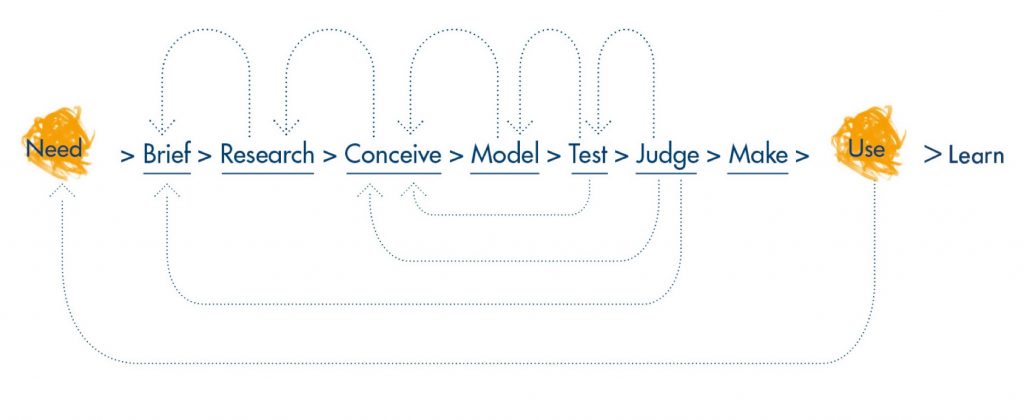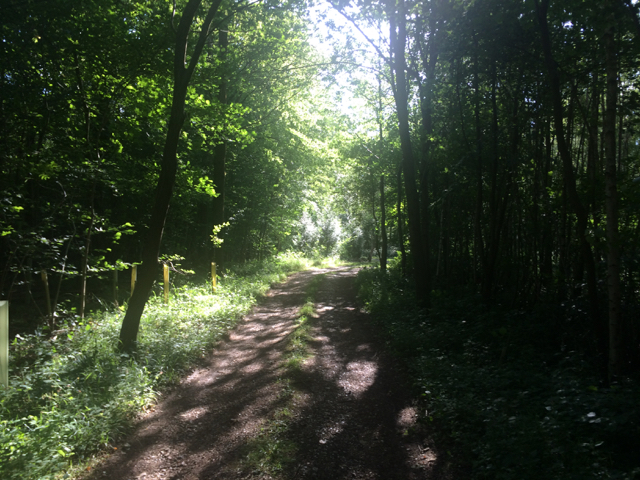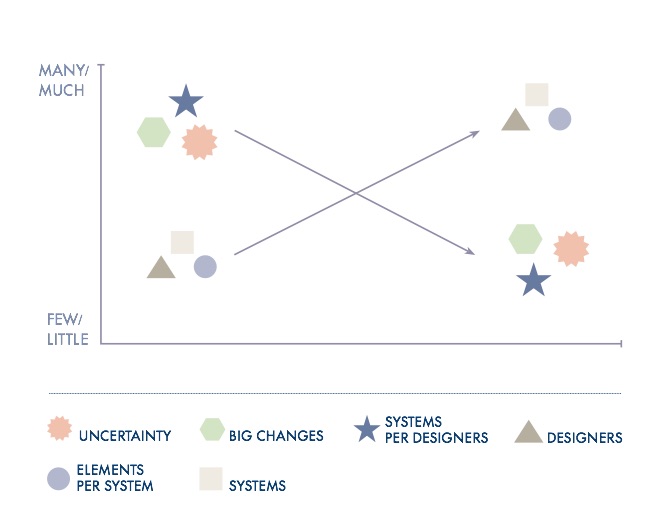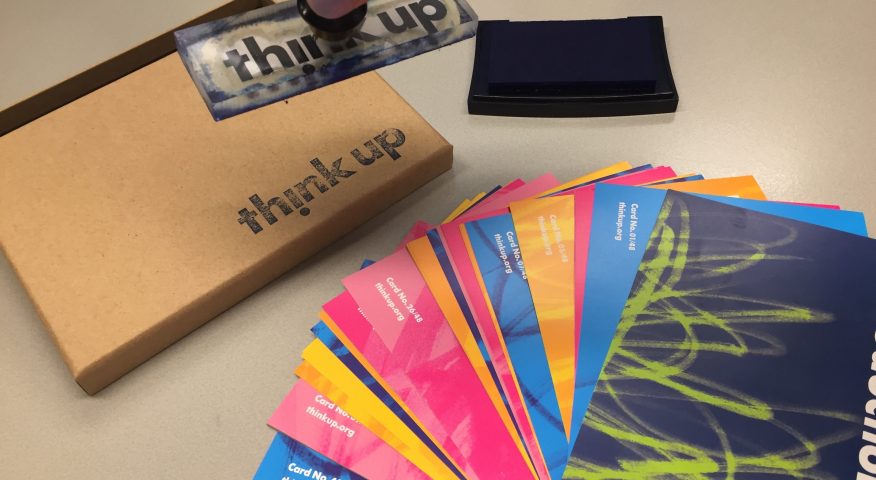This is a post for the twenty participants signed up to the online course ‘Conceptual Design for Structural Engineers – an introductory course‘. In this post we will be publishing materials, links and follow-up resources as we work through the course. If you find these resources helpful, want to ask us questions, or have some suggestions for other materials we could add then please get in touch via Twitter
Week one – all about the brief
In today’s session we talked about design being a process made up of discrete, learnable steps. We presented the following design process diagram. There are many ways of illustrating the design process. This diagram is one we have used with hundreds of engineers to help them make sense of the often-tacit design process the follow. A diagram like this can help a designer understand what they are (and aren’t) doing when they design, and think about how to improve it.


Design Process Diagram by Think Up is licensed under a Creative Commons Attribution-ShareAlike 4.0 International License.
Based on a work at https://thinkup.org/describing-design-as-a-process/.
We went on to discuss the most common challenges faced when working in the briefing phase of the design. The number one challenge identified by the group was that of dealing with conflicting requirements in the brief. The second common challenge identified by the group was client’s not being clear on what it is that they want.
To help understand why conflicting requirements in a brief emerge, we introduced the concept of the ‘Designer’s Paradox:
The client doesn’t know they want until they know what they can get; the designer doesn’t know what they will design until they start designing.
The Designer’s Paradox, McCann and Wise, 2001
The paradox tells us that a design brief will always be wrong when it is first written down. It is the job of the designer to work with the client tow work out what it is. To help resolve the paradox, we looked for ways in which the brief may be incomplete, unclear or inconsistent, using the notion of the ‘4 elements of a brief’:
- the explicit – what they do say
- the implicit – what they mean by what they say
- the assumed – what they don’t think they need to say
- the unknown – what they don’t say because they haven’t yet realised they want it
Workwork
Workwork is homework you do at work.
This week’s Workwork assignment was to keep a daily diary of the briefs that you are working with. We emphasised that any time somebody gives us a task to do, you are effectively working with a brief, so this exercise doesn’t need to be carried out strictly in the context of engineering design. Download a template you can use for the diary 180412 TU Brief diary template.
Next week we will work on techniques for developing ideas in response to a conceptual design brief.
Week 2 resources
Session two slides.
The design brief we were responding to in this session was for a butterfly observation platform in a woodland nature reserve. Below are some images to give you a feel for the site:



A simple model for having ideas
The simple model we discussed for explaining where ideas come from is that:
Ideas are new connections between existing elements in the mind. To have more ideas there are two courses of action: to change the information in the mind; and to stimulate more new connections.
Sources of information as the basis for ideas:
- Pull information out of the brief
- Draw on professional knowledge
- Diversify inputs by invoking outside interests
Ways to stimulate new connections:
- Ask ‘what if?’
- Change the primary system
- Draw the sccenario from a radically different perspective
Workwork
This week’s Workwork assignment was to keep a daily diary of the idea generation tasks you are working on, to note what sources of information you draw on, and how you stimulate new connections. I emphasised that any time you are responding to some sort of problem scenario, you are generating ideas, so this exercise doesn’t need to be carried out strictly in the context of engineering design. Download a template you can use for the diary along with the instructions.
I also asked you to develop one idea in response to the design brief. I will select four of the responses you send as the basis for our next session on modelling and testing.
Week 3 Resources – Modelling and testing
Last week’s session was about having ideas. This week we focus on how to systematically improve those ideas. In other words, how to have better ideas. Download the session slides here.
What is conceptual design?
We used the following diagram to characterise the conceptual design phase of a project.


Conceptual vs Detailed design by Think Up is licensed under a Creative Commons Attribution-ShareAlike 4.0 International License.
The point we emphasised is that conceptual design is a phase in the overall design life of a project, which has certain characteristics:
- high degree of uncertainty
- rapid changes from one solution to another
- focus on key systems
In this context designers need to be able to work with incomplete info, make quick estimates and be ready to change course.
Linking the brief to ideas via models and tests
We said:
- The brief contains design criteria
- The design criteria correspond to a series of tests that need to be passed for the idea to be judged good
- Each test is applied to some sort of model
- The models are the means by which we express our ideas outside of our heads.
We went through each of the design criteria for the butterfly platform design brief and identified the corresponding tests and necessary models. We found that subjective tests are opportunities for further investigation and creativity because they require further client engagement and designer interpretation.
Download the test-model-pass-fail template.
Development of ideas through iterative modelling and testing
We used the following idea development loop:
- Generate an idea
- Create the necessary models to compelete the tests.
- Focus on tests that were failed and adjust the idea to pass that criterion.
- Re-run the tests and see which tests it now passes and fails.
The aim of this approach is to organise your thinking and to make your thinking explicit. It helps collaborators see the development path you have taken and it allows you to track back through your thinking and check your assumptions.
Workwork
This week’s Workwork assignment was to keep a daily diary of the models and tests you use in design. We emphasised that any time you develop an idea in response to a problem you check it – how ever quickly – against some criteria of adequacy. See if you can capture this thinking process in this Testing Diary template.
Week four – Bringing it all together
In this week’s session we bring all the material from the last three weeks together in order to review Wk 4 Design brief. We look at how the brief is interpretted, what ideas we can generate from it, and how to model and test these ideas. 180503 TU IStructE Webinar Wk4 v3.0.
Related Content
- Post: Design spectroscopy – we need your views
- Post: Co-desiging problem-based learning training
- Post: Cambridge GD2 Structural modelling – learning resoures
- Post: How do you design a bridge?
- Post: Designing Structures That Move
- Post: Leading and Influencing – a quick guide to the 7 Tools
- Post: How to Have Ideas – Workshop Toolbox
- Post: Having ideas at the IABSE Bath 2017 conference
- Post: Strategies of a Consumer Electronics Designer

